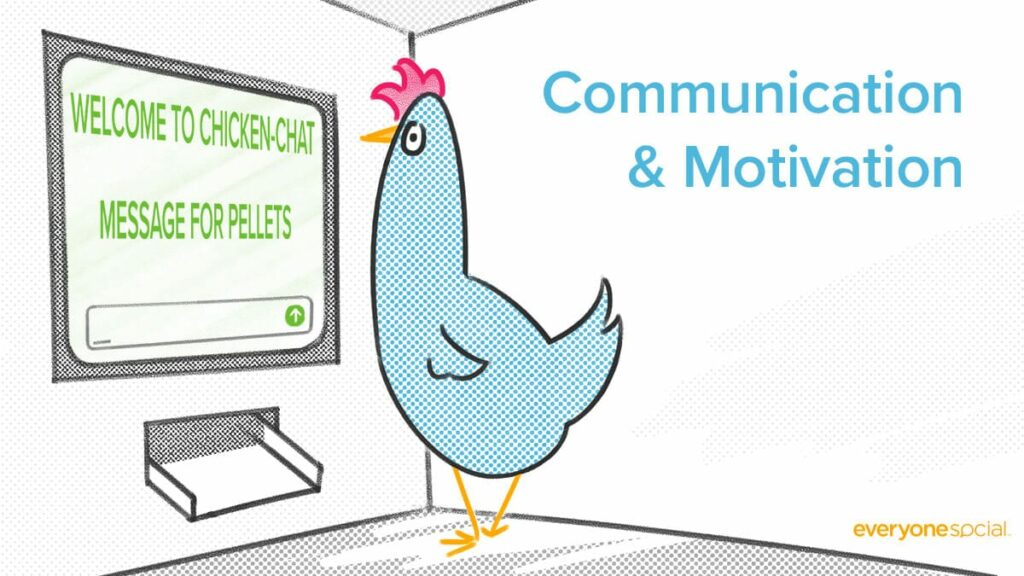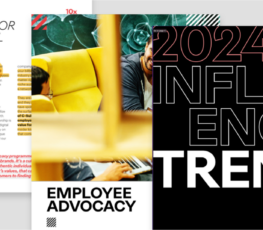Employee activation is crucial for the growth of your company and brand, but first and foremost activation is necessary for finding meaning in your own work.
When we think of activating ourselves, what might come to mind? Pyrotechnics and drum rolls, like Beyoncé at Super Bowl 50? Almost every comic book superhero/ine origin story? Dune, all the Sailor Scouts, Dragon Ball, Harry Potter, Luke Skywalker, Siddartha, Jesus (though it happens off camera).
For most of us, these personas represent unrealistic examples. Activation is not an ecstatic sonic boom that one broadcasts upon reaching a certain velocity of personal satisfaction, nor is it a box to check off and call it good.
Furthermore, activation is often experienced with other people — no wo/man is an island of activation!
When we are wholeheartedly engrossed (perhaps that’s a slightly unpacked articulation of “activation”) we are embodying a gerund of the notion — there’s no activated state; we are always activating if we are active at all. The “-ing” is operative if you catch my drift.
How Storytelling Plays Into Activation
Michael Brenner of Marketing Insider Group suggests that employee activation consists of stories from employee experience inside your own company.
In other words, activation is a function of storytelling, substantiated by employee experience, with quantifiable returns for the brand.
When employees are engaged, they have stories to tell.
And when the company “activates” those employees, which is to say enables them to voice their own authentic stories, then the company is taking a dollar-cost-average approach to brand investment.
Unlike “investing” in advertising which yields no gains the second spending is suspended, the alternative is to invest in an employee activation platform which appreciates value in perpetuity by transforming employee experience into a brand asset.
As Brenner sums it up: “Ultimately, the intention to empower your employees to greater success puts your organization on the course to greater, and more sustainable, success.”
Company Growth Begins With Personal Growth
While employee activation, engagement, and storytelling all contribute to the bottom line in quantifiable ways, how these closely related concepts pertain to the employee is at least initially a qualitative and introspective assessment.
Allow me to share my own five-point method that I use to assess whether I am as actively engaged at my current job as I can be, or how to (admittedly speculatively) assess a new opportunity.
Five criteria to gauge your activation potential:
- Do I enjoy the means — the day to day tasks, tools, people, processes?
- Do I believe in the ends — what the product or service does for the world?
- Is the work cognitively challenging in a way that allows me to grow proactively?
- Does the work afford (for me, creative) authorship such that I can put my name to projects that are vocationally intelligible and transferable to other opportunities?
- Do I have sufficient ownership such that I am saving at least a third of my compensation through either salary and/or equity given a reasonable lifestyle of my own?
If you find these questions valuable or relevant to your own assessment of how active you are at work, take it further by assigning points to each category: ten points per question for example.
And as I told myself the last time I went through these questions (each question scoring as high a ten) — if I get a total score of less than 40, then I need to deliberately seek improvement or find a new job!
Thankfully, I am above 40-points right now ;D
Employees and Customers, We’re Two Sides of the Same Story
If my five activation questions are too subjective, consider T-Mobile’s four questions that they used in 2015 to assess the transformation of their customer support strategy.
- Are our customers happier?
- Are they staying with us longer?
- Are we deepening our relationship with them?
- Are we making their service experience low-effort?
T-Mobile is a (super awesome) customer of EveryoneSocial, and just like us are leaders in their space for enabling employee activation in the workplace.
These four questions and the transformation of their customer care was led by Callie Field (now EVP of Customer Care at T-Mobile), who understood the reciprocity of customer and employee satisfaction.
This is to say, customer activation is symptomatic of employee activation! Not to mention: engagement, retention, happiness, and even storytelling.
The “TEX” T-Mobile customer care overhaul paid off in big ways for the brand: by 2018, T-Mobile’s overall cost to serve went down 13%, its NPS (customer loyalty) shot up by more than half, and its customer churn rate went down to a record low.
Case in point for the reciprocity of customer activation and employee activation: T-Mobile employees were happier than ever, with attrition and absenteeism sharply declining.
For all the doubters of how employee activation affects the bottom line, put this successful T-Mobile case study in your ROI pipe and smoke it! (HBR)
Take A Page Out of Digital Minimalism, and Activate Deliberately
Switching gears from praxis to theory for a moment: how might the concept of digital minimalism further enable employee activation in the workplace?
According to the computer scientist and educator Call Newport, maximizing the utility or meaning derived from a minimal input of engagement on social media is imperative — how can you become as active as possible with as little screen time as necessary?
“Digital minimalists see new technologies as tools to be used to support things they deeply value — not as sources of value themselves.” (1)
Digital minimalism is central to employee activation and advocacy.
As a central hub that focuses the social applications for any team in any organization, an employee activation platform like EveryoneSocial saves time for any kind of team.
Party at the Dunbar House!
Digital minimalism and employee activation both involve being deliberate on social media, engaging with only the people who matter regardless of how large one’s network reach is.
How a connection on social “matters” will vary from individual to individual: it could be a question of utility, meaning, entertainment, or any other attribution that is unique to one’s values and job.
Again, digital minimalism seeks to focus one’s (specifically social media) use to their values, and not let the converse occur.
Consistent with Newport’s minimalist imperative, I enjoy the concept of a “Dunbar House” — not a real thing, but my own visualization of the Dunbar Number which is 150: supposedly the maximum number of people anyone can maintain meaningful relationships with.
As your hypothetical Dunbar House can only hold 150 friends (congrats, you own a hypothetical mansion) — who might be joining the party; who is leaving and why are they no longer worth your attention?
No one wants to be a lab-pigeon addicted to a pellet dispenser, and yet so much of consumer technology tries to habituate people in exactly this way.

When we idly surf social media, we are like Zeiler’s experiment pigeons. But with a digital minimalism mindset, we are in control and actively engaged for a good reason. Employee activation and digital minimalism are in many ways coeval practices.
Beware of succumbing to chicken-chat
If you’re anything like me, you can Like yourself into a purgatorial procrastination (by Liking content all down the feed ad infinitum).
As the NYU professor Adam Alter puts it, “What had begun as a passive way to track your friends’ lives was not deeply interactive, and with exactly the sort of unpredictable feedback that motivated Zeiler’s pigeons.” (2)
As another digital minimalist thought experiment or exercise, keep a social journal — write a few lines every night chronicling what value you got from using social that day.
Social journaling (ideally on paper, which forces slow contemplation) can help you identify where personal activation is lacking at work, and subsequently how to improve.
If you find a disproportionate discrepancy between the time spent on social media and what you got out of it, consider trying employee advocacy as a way to concentrate and measure what aspects of social media are most valuable to you and your company.
Minimalism doesn’t mean reducing results — this is an important clarification. The practice actually maximizes one’s returns in ways that cannot occur without focused activation of engagement values.
Excuse the counterintuitive clarification — but again: digital minimalism is in the interest of finding your personal maximum.
Positive Work Environments Are Active Places
As already discussed, in many ways engagement and employee activation go hand in hand.
And when it comes to creating a positive work environment, the number one predictor of well-being is how actively engaged employees find themselves. (Gallup)
From an environmental perspective, employee activation comes from only one place: a positive culture at work.
The positive work environment consists of six pillars (Study, Study):
- Caring for, and maintaining responsibility for colleagues as you would for friends (even if your colleagues are not your friends, as is often the case).
- Providing support for one another, including offering kindness and compassion when others are noticeably struggling.
- Resisting the blame game, forgiving mistakes.
- Inspiring one another at work by actively considering what interests others.
- Emphasizing the meaningfulness of the work by discussing and sharing values!
- Default to trust, and show gratitude for one’s colleagues.
Studies across the board have shown that engagement and employee activation are negatively associated with cutthroat or openly-competitive work cultures.
No doubt, a handful will thrive on the excitement of public competition, but most will become discouraged and disengage.
A negative work environment (with invariably disengaged workers) suffers 37% higher absenteeism, 49% more accidents on the floor (in manufacturing/service contexts), 60% more errors and defects in general, 16% reduced profitability for the company, 37% reduced job growth, and even reduced share price of 65% over time. (QSB, Gallup)
Goes without saying, a stressful work environment is costly. Without a positive work environment, voluntary turnover can increase by 50%, and the cost of replacing an employee is often about 20% of their salary. (AIS, CAP)
Where a positive work environment encourages honesty and sincere behavior amongst coworkers, clients, and customers, a negative work environment prompts all sorts of mendacious habits.
Lying to customers, fraud, and mis-selling are all triggered by the anxiety felt in a negative workplace. (HBR)
Of course the positive flip side to all this fire and brimstone is that employee activation is not an abstract feeling but is constituted by concrete behavior with measurable results.
End of the day, teams with actively engaged employees are 21% more profitable. (Gallup)
Activation is for People, Not Products
Once upon a time, I prospected joining a design team at Riot Games and had a revealing conversation with an art director there.
She told me that despite working at an enviable studio on an unprecedentedly popular product that her teammates were the most rewarding part of her job.
I figured since she was an accomplished artist, having an opportunity to get paid to draw all day and get health-insurance would be as good as it gets! To my surprise, art-as-such was not her reason to get up in the morning.
To drive home her sincerity, she went so far to say that the prestige (or rather competition) of working at Riot actually threatened what she enjoyed most: establishing meaningful connections with her fellow artists on her team and with creatives in other departments.
I see she no longer works at Riot, perhaps suggesting that the work culture there eventually eclipsed the value of her work relationships.
But the lesson is something we all hear and might not prioritize as much as we should: investing in relationships sustain any career.
Anecdotes aside, a positive work environment that fosters the activation of employees with meaningful relationships positively affects the bottom line.
When employee activation is bolstered by meaningful relationships, more knowledge is shared, retention and engagement increases, burnout is reduced, innovation occurs and performance increases. (HBR)
Just as relationships within the workplace are essential for employee activation, perhaps the “seventh pillar” of a positive work environment is to ensure employees have enough time and energy to make meaningful relationships outside of work.
Studies have shown that without an extravocational network of deep relationships, no employee can find activation within the workplace. (Connected Commons)
Employee Activation and Emotional Intelligence
Empathy, empathy everywhere,
Nor an activation link.
So goes the The Rime of the Ancient Manager. I’m just joking — made that up right now. In all seriousness, empathy gets lingo-dropped everywhere these days (more like, for the past decade).
But how useful is empathy for employee activation? Is empathy always the best emotional-lens through which to understand others’ values and needs?
Because employee activation is fundamentally a question of personal values, activation requires some moral decision making — at least in terms of what’s important to one’s own career (in terms of meaning).
And as the Yale psychology professor Paul Bloom puts it: “Empathy is what makes us human; it’s what makes us both subjects and objects of moral concern. Empathy betrays us only when we take it as a moral guide.” (3)
In other words, empathy as an emulation of another’s emotional situation is not the best approach for enabling employee activation in the workplace.
Talking with a colleague about what is most meaningful at work however can enable activation, and is a discourse that everyone can partake in without the need to feel anything out.
For a leader who seeks to better activate her or his team, being high in empathy doesn’t make one a good manager, and being low in empathy doesn’t make one a bad manager.
However as Dr. Bloom insists: distanced compassion and respectful care are more effective modes of navigating interpersonal challenges than trying to feel another’s feelings. “There are emotions and considerations outside of empathy, and there are many reasons to care about others.” (4)
Especially when trying to understand employee activation in the aggregate, empathy falls egregiously short of the mark. “To the extent that we can recognize that the numbers are significant when it comes to moral decisions, it’s because of reason, not sentiments.” (5)
Not to tip a sacred cow just for the thrill of it — empathy is important and has its role in our daily lives, but when it comes to employee activation in the workplace, there are better ways to enable each other and ourselves.
Final Thoughts
Employee activation is a team effort, despite requiring personal introspection of what makes work most meaningful to us individually.
As a daily practice, employee activation is not a trophy that sits statically in perpetuity once achieved. Methods such as digital minimalism can provide structure to a personal employee activation practice.
To review the several attribute lists discussed in this article, there are many related components to employee activation:
- Personal: Jason’s five questions of personal activation.
- Interpersonal: T-Mobile’s four questions of customer-employee activation.
- Cultural: The six (actually seven) pillars of a positive active workplace.
Lastly, to return to Michael Brenner’s emphasis on storytelling, employee activation cannot occur without the right cultural environment and platform.
An employee advocacy workspace can enable and prompt employee activation by encouraging the sharing of user generated content creation and authentic storytelling, ultimately building a brand investment.
When it comes to employee activation, the old saying rings truer than ever: “The medium is the message.” (6) The medium of activation is employee advocacy.
1 Cal Newport, Digital Minimalism: Choosing a Focused Life In a Noisy World (Penguin Random House, 2019), 252.
2 Adam Alter, Irresistible: The Rise of Addictive Technology and the Business of Keeping Us Hooked (Penguin Press, 2017), 128.
3 Paul Bloom, Against Empathy: The Case for Rational Compassion (HarperCollins, 2016), 131.
4 David D. Vachon, Donald R. Lynam, and Jarrod A. Johnson, “The (Non) Relation Between Empathy and Aggression: Surprising Results from a Meta-Analysis,” Psychological Bulletin 140 (2014): 16.
5 Paul Bloom, Against Empathy: The Case for Rational Compassion (HarperCollins, 2016), 89.
6 Marshall McLuhan, Understanding Media: The Extensions of Man (McGraw-Hill, 1964), 9.















